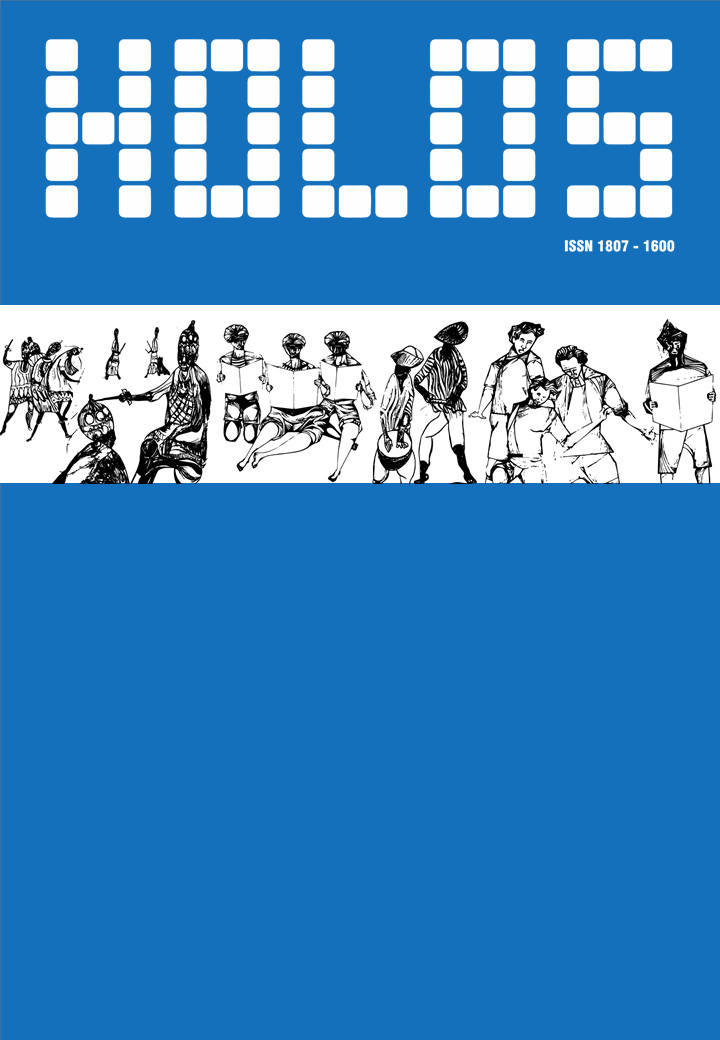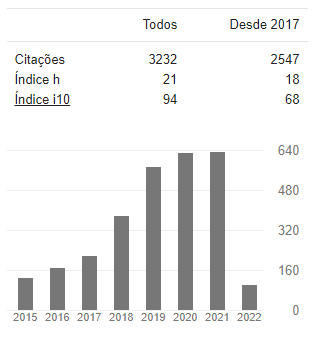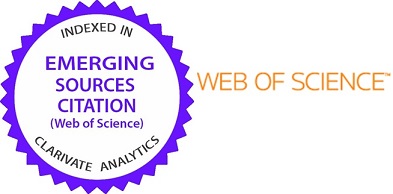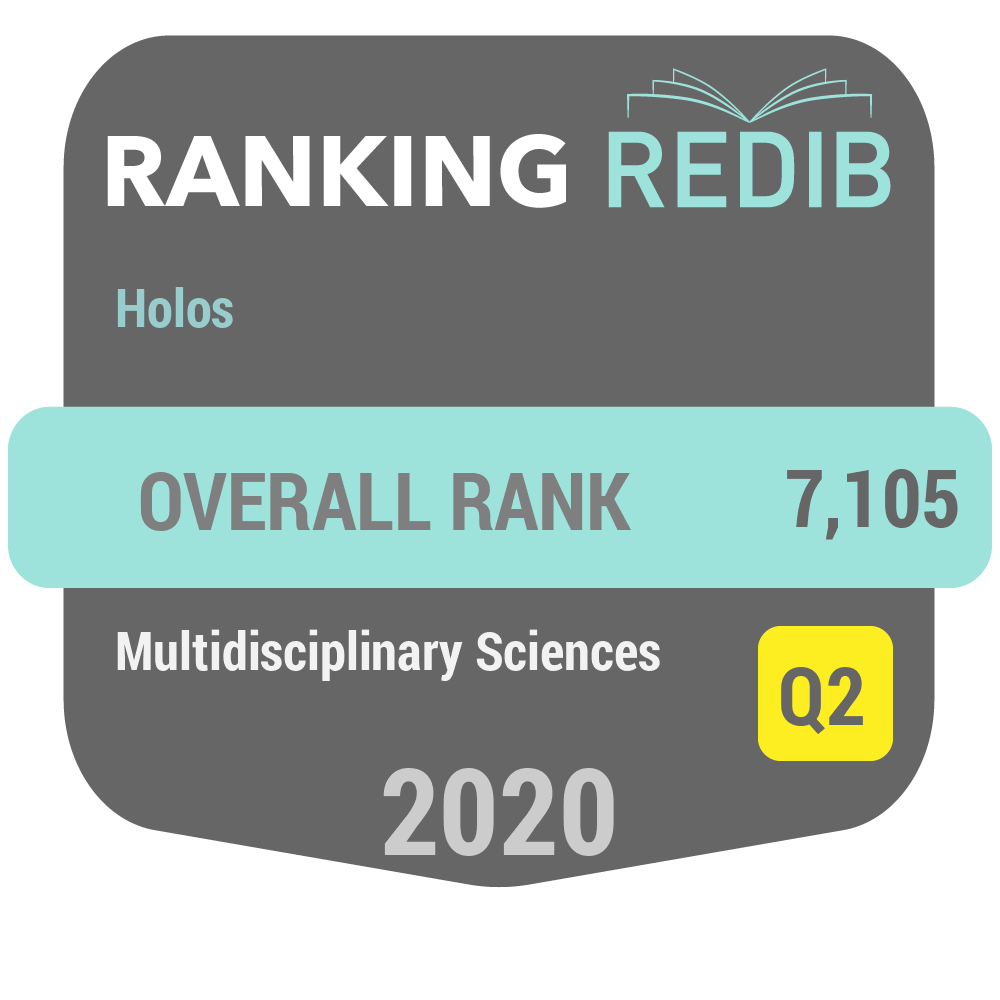ESTUDIO DE REACTIVO INHIBIDOR - COLECTOR PARA MINERALES DE COBRE
DOI:
https://doi.org/10.15628/holos.2016.5126Palavras-chave:
inhibidor, colector, molienda, consumo, flotaciónResumo
En los últimos años los elevados costos en la molienda han focalizado la atención en el aumento de la eficiencia y en la disminución del consumo de medios de molienda. En esta línea han aparecido en el mercado una nueva serie de inhibidores para la corrosión y colectores para la flotación, bajo el nombre comercial de PETKOM. Estos reactivos son interesantes de estudiar porque disminuyen el consumo de acero y actúan como colectores selectivos, entregando concentrados de mayor pureza en el caso de cobre. En este estudio se realizaron pruebas de laboratorio en paralelo, con y sin el uso de inhibidor, para determinar el consumo de acero. La densidad de pulpa usada en la prueba estándar fue de 70%, y con inhibidor de 76%, agregando una dosis de SKIK de 30 g/t en el molino. Los resultados mostraron un ahorro en el consumo de bolas de 1,9 % para para el mismo tiempo de molienda y gasto en energía; además el inhibidor permitió moler un porcentaje de mineral adicional de 9%. La eficiencia del SKIK como colector se puso a prueba en flotación, donde se comparó con el reactivo MATCOL (20 g/t), en dosis de 10, 20 y 30 g/t a diferentes pH. Este nuevo reactivo mostró un aumento en la recuperación de 1 a 2% en cobre, 9,2% en oro y 4,9% en plata.Downloads
Referências
ALDRICH, C. (2013). Consumption of steel grinding media in mills – A review. Minerals Engineering 49, 77–91.
BLICKENSDERFER, R. A., TYLCZAK, J. H. (1989). Evaluation of commercial U. S. grinding balls by laboratory impact and abrasion tests. Miner. Metall. Process. 6: 60-66.
BOND, F. C. (1964). Metal wear in crushing and grinding. Chem. Eng. Prog. 60, 90 - 100.
BRUCKARD, W.J., SPARROW, G.J. AND WOODCOCK J.T. (2011). A review of the effects of the grinding environment on the flotation of copper sulphides. International Journal of Mineral Processing 100, 1–13.
CHENJE, T., SIMBI, D., NAVARA, E. (2003). Wear performance and cost effectiveness––a criterion for the selection of grinding media for wet milling in mineral processing operations. Minerals Engineering 16, 1387–1390.
CLEARY, P. W., MORRISON, R. D. (2011). Understanding fine ore breakage in a laboratory scale ball mill using DEM. Minerals Engineering 24, 352 -366.
FUERSTENAU, D.W. and ABOUZEID, Z. M. (2002). The energy efficiency of ball milling in comminution, International Journal of Mineral Processing. Vol. 67, 161-185.
GREET, C., OBENG, D., KINAL, J., BOSSCHER, P. (07, 2013). The Application of High-Chrome Grinding Media at MMG Century Mine for Improved Grinding Media Consumption and Metallurgy Performance, Metallurgical Plant Design and Operating Strategies (MetPlant 2013), Perth WA.
GREET, G.L. SMALL, P. STEINIER AND GRANO, S.R. (2004). The Magotteaux Mill®: investigating the effect of grinding media on pulp chemistry and flotation performance, Minerals Engineering 17, 891–896.
HOEY, G. R., DINGLEY, W. AND FREEMAN, C. (1975). Corrosion inhibitors reduce ball wear in grinding sulphide ore, CIM Bull., Mar.120-123.
JENSEN, L., FUNDAL, E., MOLLER, P., JESPERSEN, M. (2010). Prediction of wear rates in comminution equipment, Wear 269, 525–533.
JONES, D. A. (1985). Corrosive wear in wet ore grinding systems. The Journal of the Minerals, Metals & Materials Society (TMS) 37: 20.
KING, J., LI, Q., WANG, A., CATHY HE, C., ZHOU, J., DENG, H., XU, R. (2015). Evaluation of grinding media wear-rate by a combined grinding method, Minerals Engineering 73, 39–43.
MEULENDYKE, M.J., PURDUE, J.D. (1989), Wear of grinding media in the mineral processing industry: an overview. Minerals & Metallurgical Processing, 6 (4), 167–172.
RADZISZEWSKI, P. (2002). Exploring total media wear. Minerals Engineering, 15 (12), 1073–1087.
RAJIC, V. PETKOVIC, Z. (2005). Selective flotation agent and flotation method. US 20050150330 A1.
SEPÚLVEDA .E. J. (2004). Methodologies for the evaluation of grinding media consumption rates at full plant scale. Minerals Engineering, 17, 1269–1279
SOBERING, A. AND D. N. CARLSON. (1971). Dry grinding at the Wabush mines pellet plant. CIM Bull, 64, 254 - 258.
ZHONG, L., WU, B., ZHANG L., FANG, F., AND HE, X. (2005). Prediction and Experimental Testing of Spherical Milling Media Wear Rate. Materials Transactions, Vol. 46, No. 9, 2036-2040.









































